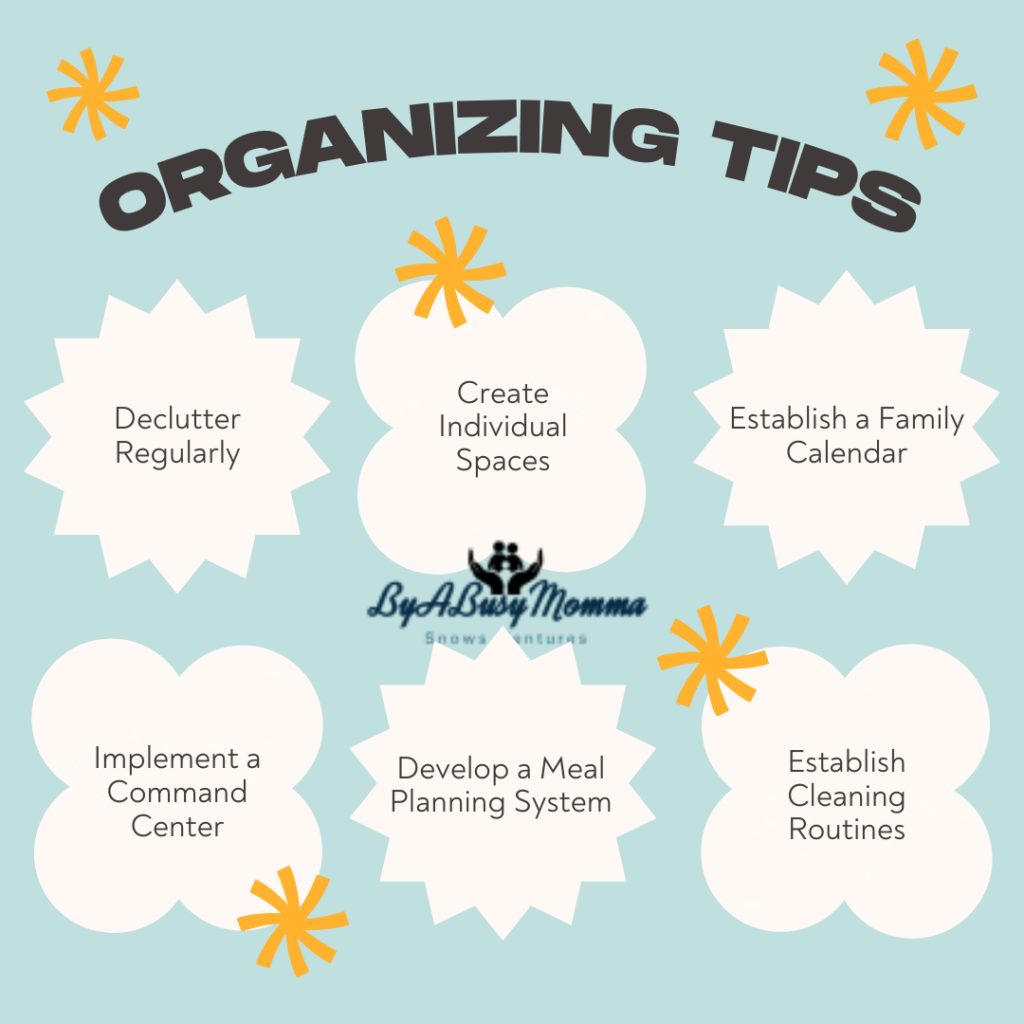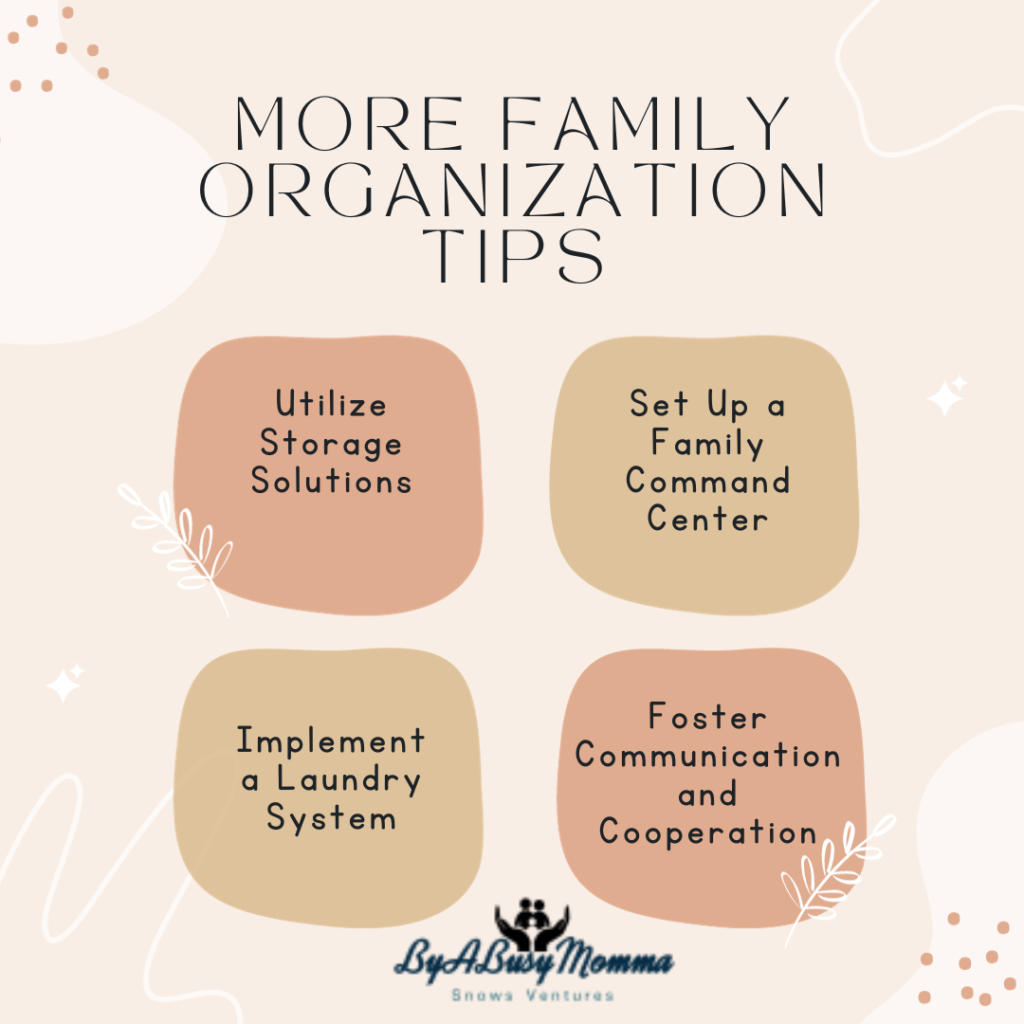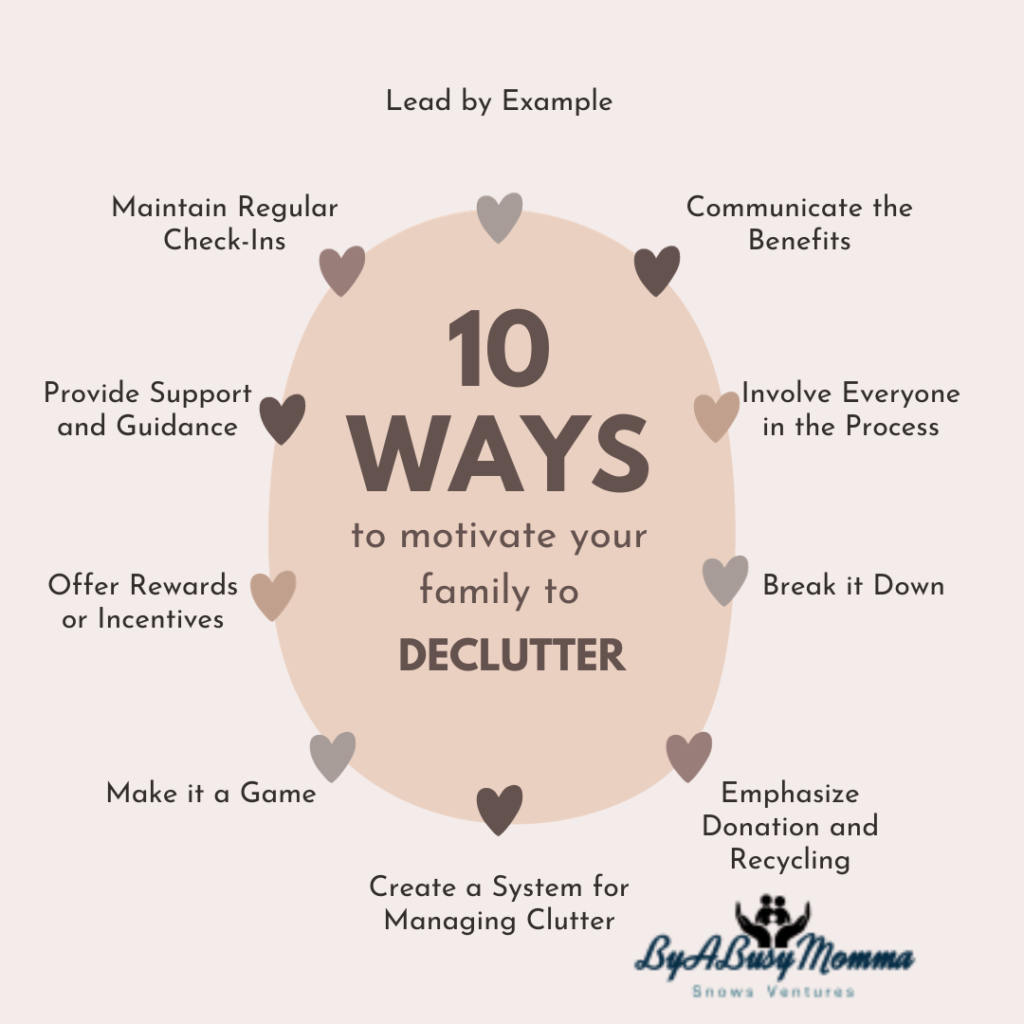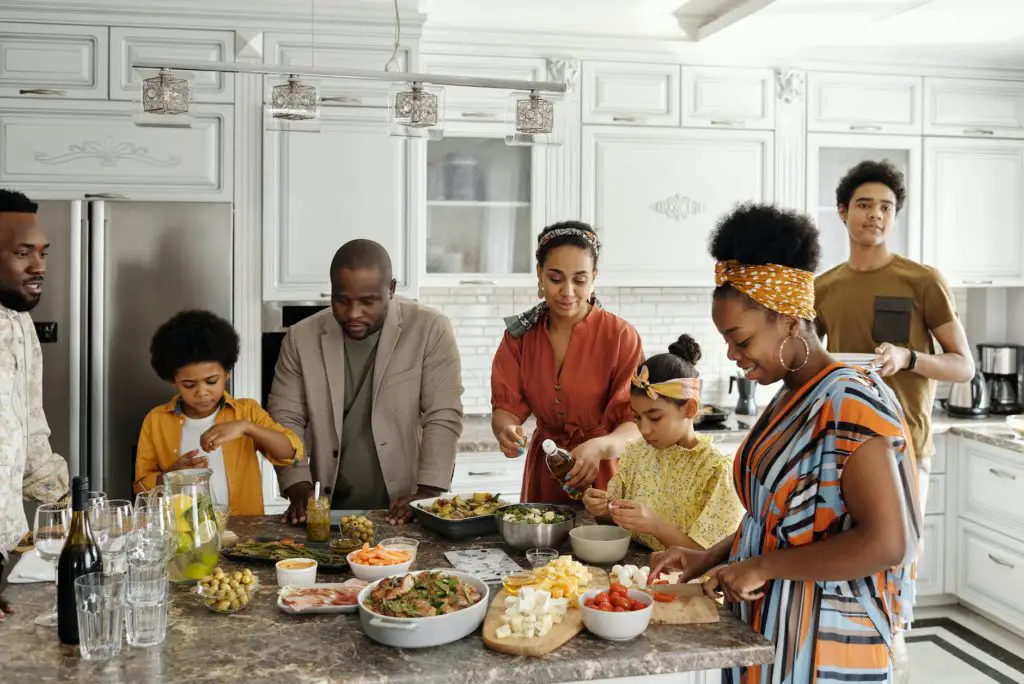Organizing a big family can be challenging. Currently, I am married and have only one little girl. However, I grew up in a large family. I was the oldest of 10 kids, and so I know all about the madhouse of keeping ten different people on the same page. My mom was good at keeping her home in order, and I know I have learned many of those skills from her. She did not use all these hacks but used many to keep her home in order. I have learned a lot of her skills, and here are just some of the practical strategies and systems she used, as well as what I have in place in my home. Not all of these will work for each family but using at least 2 or 3 will help you create an organized and efficient household.

Organizing tools on Amazon:

Here are some organizing tips for big families:
Declutter Regularly: With more household members, clutter can accumulate quickly. Regularly declutter each room and encourage family members to let go of items they no longer need or use. Implement a system for donating or selling unwanted items to keep the home clutter-free.
Create Individual Spaces: Allocate individual spaces or zones for each family member. This can include personal bedrooms, designated shelves, or storage bins for their belongings. Having dedicated spaces will help keep belongings organized and minimize confusion.
Establish a Family Calendar: Use a central family calendar to keep track of everyone’s activities, appointments, and commitments. Whether a physical or digital calendar, ensure it’s easily accessible and visible to all family members. Color-coding or using different symbols for each family member can help differentiate schedules.
Implement a Command Center: Create a command center in a high-traffic home area, such as the kitchen or hallway. This can include a bulletin board, whiteboard, or wall-mounted organizer to display important information, such as school schedules, meal plans, chore charts, and to-do lists.
Develop a Meal Planning System: Plan meals to save time, reduce stress, and meet everyone’s dietary needs. Create a weekly or monthly meal plan, make a shopping list based on the plan, and batch cook or meal prep when possible. Involving family members in meal planning can help ensure everyone’s preferences are considered.
Establish Cleaning Routines:
- Divide household chores among family members based on age and capabilities.
- Set a cleaning schedule or chore chart and encourage everyone to contribute.
- Regularly review and adjust the chore assignments to support fairness and balance.

Utilize Storage Solutions: Invest in storage solutions that maximize space in your home. Use bins, baskets, shelves, and storage containers to keep items organized and easily accessible. Labeling containers and shelves can help family members quickly find what they need and maintain order.
Set Up a Family Command Center: Choose a central area in your home as a family command center. This space can include a message board, calendars, a bulletin board, and a filing system for important documents and papers. It serves as a hub for communication, planning, and staying organized.
Implement a Laundry System:
- Develop a laundry routine that works for your family.
- Set specific laundry days, designate hampers or baskets for each family member, and involve older children in sorting, folding, and putting away their laundry.
- Consider color-coded or labeled laundry bins to avoid mixing up clothing.
Foster Communication and Cooperation:
- Encourage open communication and cooperation among family members.
- Regularly hold family meetings to discuss schedules, responsibilities, and any issues.
- Encourage everyone to contribute ideas and solutions to help maintain a harmonious and organized household.
Encouraging family members to declutter regularly is key in helping to keep the home more organized and welcoming. Therefore, encouraging family members to declutter is a collaborative process that fosters a sense of responsibility and shared ownership of the home.

Here are some practical ways to motivate your family members to declutter:
Lead by Example: Start by decluttering your belongings and demonstrating the benefits of a clutter-free environment. When your family sees your commitment to decluttering, they may be more inclined to follow suit.
Communicate the Benefits: Explain to your family members the advantages of decluttering, such as a cleaner and more organized home, reduced stress, and easier access to the things they need. Help them understand that decluttering can create a more comfortable and enjoyable living space for everyone.
Involve Everyone in the Process:
- Make decluttering a family activity.
- Set aside dedicated time for decluttering sessions and involve each family member in their own space.
- Please encourage them to decide what to keep, donate, or discard.
- Offer support and guidance when needed.
Break It Down: Decluttering can feel overwhelming, especially for children or teenagers. Break the process into smaller, manageable tasks. Focus on one area or category of items at a time, such as clothing, toys, or books. This approach helps prevent burnout and keeps the process more manageable.
Emphasize Donation and Recycling: Teach your family about giving back to the community and minimizing waste. Discuss donating items to those in need or recycling whenever possible. Knowing that their belongings can positively impact others may motivate them to let go of things willingly.
Create a System for Managing Clutter: Establish a system for managing clutter continuously. For example, have designated bins or baskets for items that must be put away, donated, or discarded. Encourage family members to use the system consistently to maintain an organized environment.
Make It a Game: Turn decluttering into a fun and engaging activity. Set challenges or goals, such as seeing who can find the most items to donate or organizing a race to tidy up shared spaces. Adding an element of competition or playfulness can make the process more enjoyable.
Offer Rewards or Incentives: Consider providing small rewards or incentives to motivate family members to declutter. For example, you could plan a special outing or treat for reaching specific decluttering milestones. This positive reinforcement can create a sense of accomplishment and encourage continued participation.
Provide Support and Guidance:
- Offer assistance and guidance to family members struggling with decluttering decisions.
- Help them ask critical questions about items’ usefulness or sentimental value.
- Please encourage them to focus on what truly brings them joy or serves a practical purpose.
Maintain Regular Check-Ins: Once you’ve made progress with decluttering, maintain regular check-ins to ensure that clutter doesn’t accumulate again. Schedule periodic decluttering sessions as a family to keep the home organized and reinforce the habit of letting go of unnecessary items.

Patience and understanding are key when encouraging family members to declutter. Respect their attachment to certain belongings and allow them to make their own decisions about what to keep. Creating a supportive environment can motivate your family to embrace decluttering as a regular practice.
Also, organizing a big family is an ongoing process. Adapt and refine these tips to suit your family’s needs and preferences. With consistency and involvement from all family members, you can create a well-organized and functional home environment.
